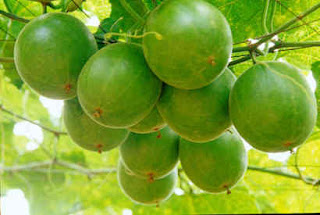 Sometime ago, at Broga town, I encountered red coloured barley drink. ( not exactly red, purplish to be more exact )
Sometime ago, at Broga town, I encountered red coloured barley drink. ( not exactly red, purplish to be more exact )I believe it to be coloured with leaves of Rhoeo discolor ( 蚌花 ), a herb of the Commelinaceae family, native to tropical Americas. It is also called Tradescantia spathacea. More commonly known as “Moses-in-the-Cradle”
The leaves are about 30 – 40 cm long, green upper surface with purplish lower surface. The white flowers with boat-shaped bract suggest their name “Moses-in-the-Cradle”..
In Mexico it is used in alternative medicine to treat cancer, but there are not concrete scientific reports that validate their antitumuiral property. Some study however suggested the extract of Rhoeo discolor decrease the formation of liver preneoplastic foci in rats.













_fruit_(opened).jpg)










